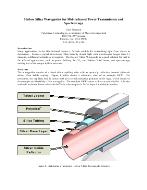 
| Highlights from the May 2013 issue of Photonics Spectra |

 |
Trilinear Cameras Offer High-Speed Color Imaging Solutions
The attributes of trilinear line-scan color imaging technology are weighted against those of three-chip and bilinear. High-speed color imaging plays an important role in machine vision. Some objects are nearly indistinguishable in gray-scale monochrome imaging. Industrial line-scan color cameras, using either charge-coupled device or complementary metal oxide semiconductor sensors, have been widely used in print inspection, check scanning, electronics manufacturing, food sorting, transportation safety and many other applications. When selecting an imaging technology, always consider the performance and cost requirements. |
|
|
|

Photonics Steals the Show
In the entertainment industry, photonics plays a starring role in a host of settings. Laser light shows go back almost as far as the laser itself. But thanks to technological advances, simplified setups and dramatically lower cost, laser light shows have spread from the occasional permanent attraction and Pink Floyd concerts to theme parks, theaters, casinos, musicals, planetariums, hotel resorts, cruise liners, sports, arts and other big events. |
|
|
|

120-W ArFi Laser Makes Higher-Dose Lithography Possible
A new flexible excimer laser system makes high-volume multiple-patterning manufacturing possible. Demand for increased semiconductor device performance at low cost continues to drive the shrinking of the feature geometry on silicon wafers. Over the past decade, argon fluoride excimer laser systems operating at 193 nm and producing high output power have played a key role in patterning the most advanced features for high-volume deep-ultraviolet lithography. |
|
|
|

Hybrid Laser Improves Micromachining Throughput, Quality
Based on a fiber seed and a DPSS power amplifier, a new laser system produces UV and green wavelengths for increased precision and volume. Over the past several decades, lasers have played an important role in the manufacture of advanced consumer electronic devices. From printed circuit boards to flat panel displays, hard disks to semiconductor wafers, laser processes are used to create the components of our smartphones, tablets, laptops and TVs. |
|
|
|

Laser Gain Media: A Diverse Family of Materials
The many types of gain media in use since the birth of the laser are widely differing in their essential properties. Since the birth of the laser in 1960, a huge variety of gain media have been used: various dielectric crystalline and glass materials, semiconductors, dyes and gases. Although some are definitely more popular than others, a wide range of gain media is still in use, with some strongly differing from one another in many respects. |
|
|
|






 |
Hollow Silica Waveguides for Mid-Infrared Power Transmission and Spectroscopy
Polymicro Technologies, Sub. of Molex, Inc.
Applications in the Mid-Infrared often require a flexible conduit for transmitting light from source to destination. Hollow Silica Waveguides with an internal Ag/AgI dielectric reflective layer optimized for maximum transmission between 2.5µm and 15µm have been used successfully for applications such as Erbium YAG and CO2 laser power transmission for industrial and medical applications. In addition the waveguides are used as long path flow cells for IR spectroscopy. In the following paper, the physical structure of the waveguides is detailed. Guidelines for handling and optical coupling are discussed. Typical spectral attenuation is shown for example waveguides.
DOWNLOAD WHITE PAPER >> |
 |
 |


Follow Photonics Media on Facebook and Twitter
|
   |
|

sponsor
 |


sponsor
 |

sponsor
 |

sponsor
 |

sponsor
 |
 |